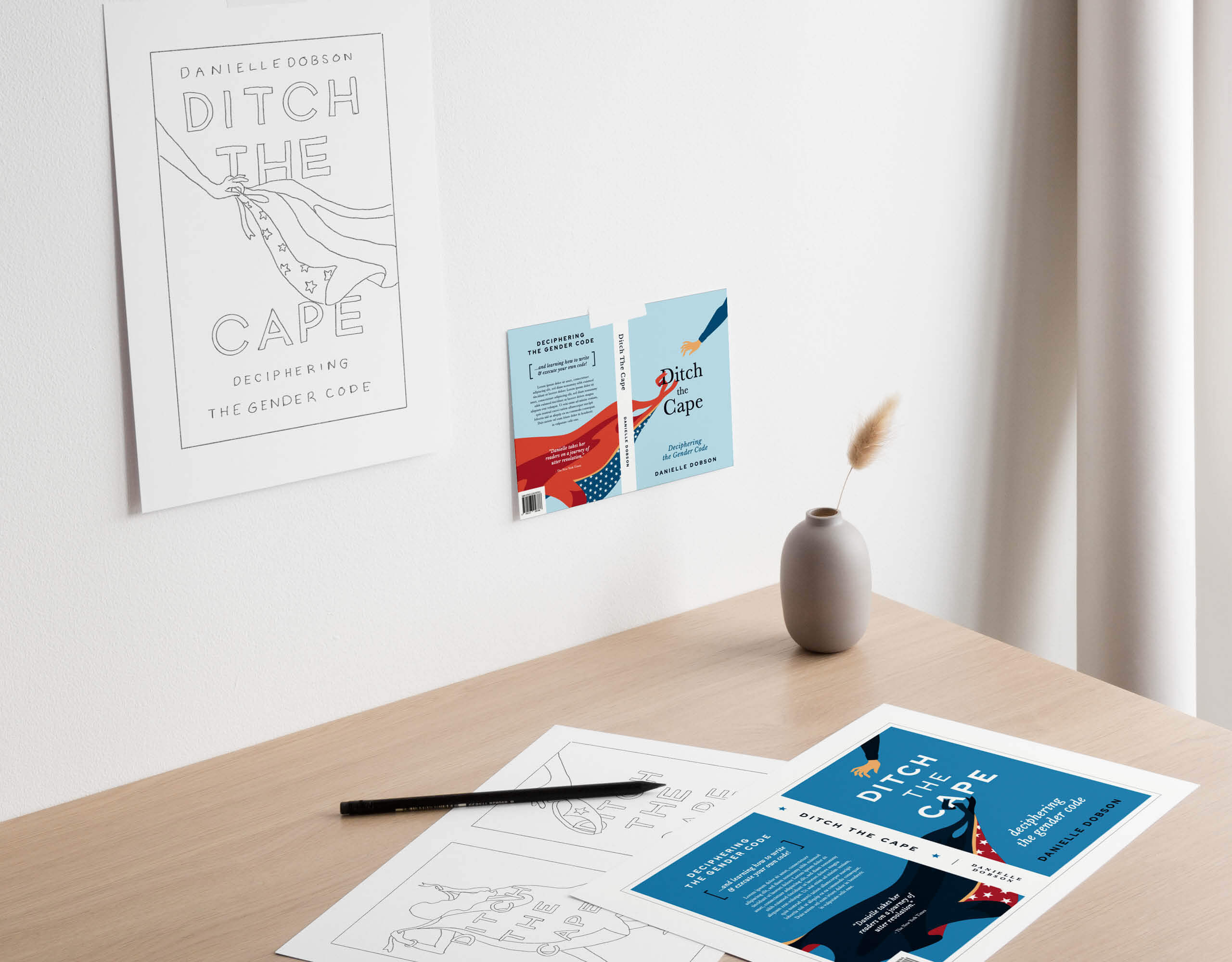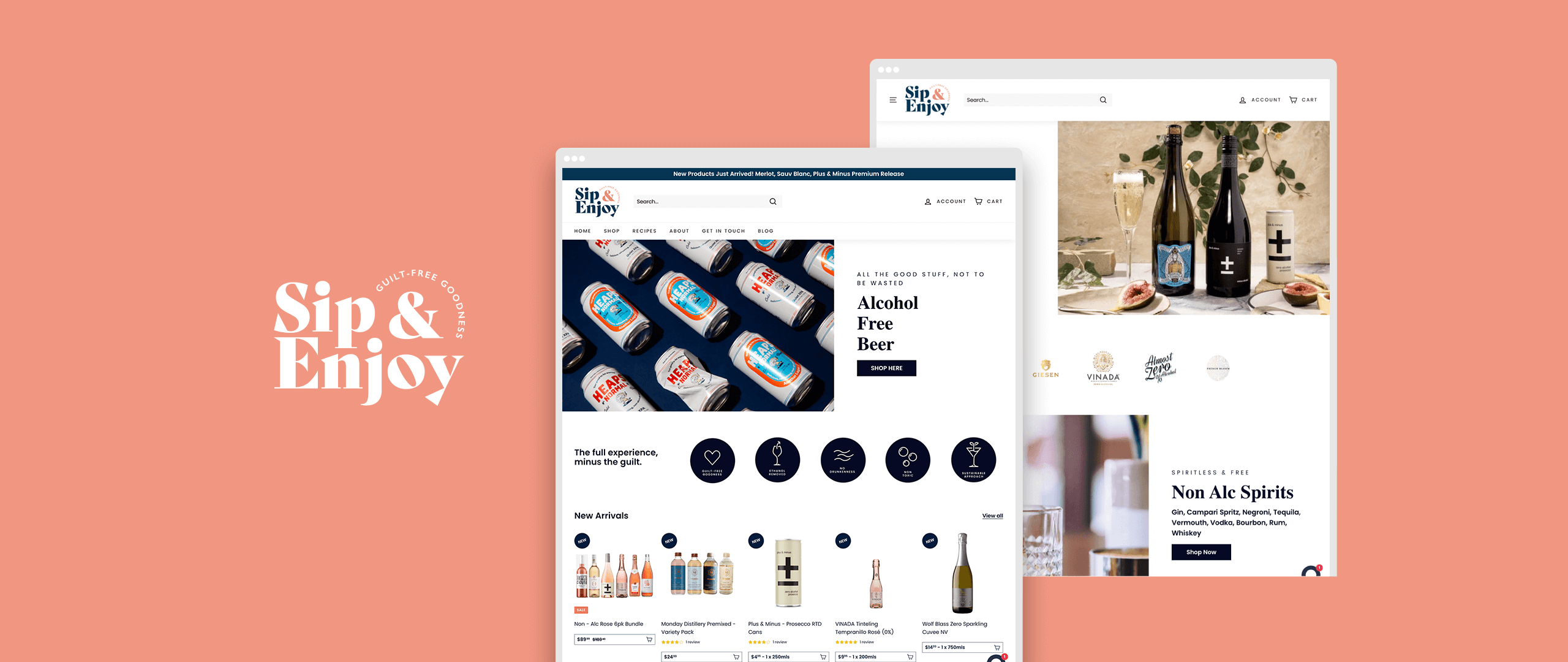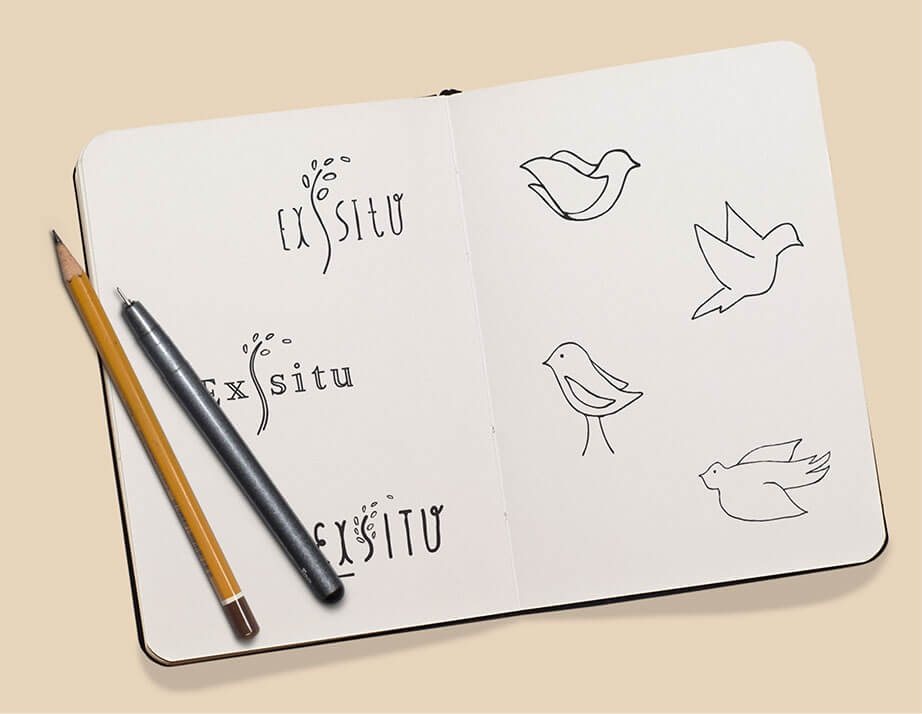“Marketing doesn’t work on me.”
Man wearing Nike shoes, Lululemon shirt and pants, Apple watch, and holding a Starbucks coffee – Neal O’Grady.What do all these companies have in common? A strong brand identity that portrays relevancy and staying power. And how do you create that? Read this blog to find out!
The Building Blocks of Branding
When it comes to branding, certain building blocks need to form in order to create a strong foundation. A strong foundation for your brand is as important as having a solid foundation for your home. Without it, everything else you do will be at risk of crumbling down. “A house is only as strong as its foundation”, and the same applies to your business or brand.
The First Building Block – Positioning
What is Positioning?
Positioning is one of the most important marketing strategies you can use to differentiate your business in a crowded marketplace. It’s all about how your brand is perceived in the consumer’s mind and involves carefully crafting messages that will resonate with your target audience.
Why is it important?
This reigns more importance than ever before due to traditional advertising methods no longer having the same impact they once did. It’s no secret that people are more savvy to advertising today than ever before. We’re all clued into the tricks and strategies marketers use, and we have become increasingly adept at spotting deceptive practices.
Today, consumers always consider your product or service in relation to other brands. You need a position that is inherently different than your major competitors, and this will act as the basis of your brand for years to come.
How to create your position
In order to position your brand in the minds of consumers, you must verbalise the hole your brand is trying to fill. Consumers think in words, and to be successful, brands must preempt a word or concept and associate that to your brand. Volvo owns safety. BMW owns driving.
Mercedes Benz’s own prestige. What does your brand own? Have that down pat and you’re one step closer to a strong brand identity.
The Halo Effect
Now, before we move on to our next building block, it is important to mention the halo effect. The halo effect is the psychological principle underpinning the entire positioning concept. It’s the idea that one positive attribute can create an “aura” of desirability around a product or service and make other aspects of the offering more attractive in comparison. For instance, Mercedes Benz uses the word ‘driving’ in their positioning; you’ll naturally assume that it must be well-built and durable too – that’s the halo effect! Now you know why we encourage you to start with one word in your branding journey.
The Second Building Block – Creating a Meaningful Brand
Creating a meaningful brand is tricky in the sense that while you are busy creating your brand identity, it is ultimately the consumer who will decide the ‘meaning’ behind your brand.
But what exactly is brand meaning? Brand meaning is the snapshot that immediately comes to mind, when hearing the brand name. For example, our client, Starbucks’ brand meaning is a ‘premium coffee experience.’
The distinguishing features of a brand, including words, images, sounds, shapes, textures, colours and aromas, all contribute to the brand’s meaning. These components are always up for interpretation, making the creation of meaning a very active one.
The strongest of these components often become the brand’s signature cues – the more meaningful the components, the more meaningful the brand. Such as the striding man of Johnnie Walker. From this, the brand becomes important for what they symbolise. It emerges from its distinct product category, evolving into a brand with the potential to attain status and resonate with society. As such, a meaningful connection is formed, a vital element when striving for relevancy and staying power in today’s saturated market.
However, it is important to note that meaning does not come from these features alone. The customer experience, including purchasing it, using it, discussing it with friends, and being exposed to marketing collateral, is when the brand meaning begins to form. Through this journey, the consumer will form a cluster of meanings in their mind. It is the brand’s job to reinforce, strengthen, and sometimes revolve the meanings associated with the brand. This will keep you unique and remain top of mind for your audience. At Rooland, we can help you manage your brand meaning to ensure you reach your branding goals.
Through the customer experience, it is vital to provide numerous senses that your customer can engage with. This creates a feast for the customer as their brain is responsible for various things, including emotions, sensory information, memories and thinking. The more senses you engage with, the more vivid and tangible the experience becomes for the customer.
An engaging experience, strong sensory marketing, and original visual identity whilst also conveying a captivating set of values is a match made in branding heaven.
In today’s postmodern marketing world, a transaction between a brand and a consumer is simply a transaction of meaning.
The Third Building Block – The Power of Storytelling
The power of storytelling cannot be overlooked. Stories are easy for humans to remember; in many ways, it’s how we remember.
Brand storytelling creates an emotional connection between your audience and your brand, enabling them to become invested in what you do. People are naturally born storytellers; by weaving an engaging narrative around your product or service, it will help bring it to life in a meaningful and memorable way.
As the marketplace becomes increasingly saturated, a product or service is merely enough to stand out. Brand storytelling can be that extra special ingredient for success.
Remember your brand meaning? Your task is to convey precisely that through storytelling. This becomes your narrative, and when paired with powerful sensory cues such as visual signs, words, and design elements, it can make your brand instantly recognisable. However, the narrative and sensory cues must stand for values people admire and consider significant to leverage the true power of storytelling.
Your chosen values will transcend every business decision you make, serving not only the greater community but the internal workings of the team.
Here at Rooland, we executed a powerful story for our client, ExSitu. The main brand objective for this project was to give ExSitu a bespoke and personable aesthetic whilst still maintaining a globally marketable brand. ExSitu founders April and Rebecca are both former nurses in aged care facilities. Therefore, it seemed only natural to create a brand personality that reflected their warm, personable, and supportive traits. Combined with their passion for birds and Botanics, the end result is a sophisticated yet playful and friendly logo. To learn more about this project, click the link: https://www.rooland.com/portfolio/custom-illustration-design-exsitu/
Ultimately, as a brand, you want to tell the world who you are, why you exist, and why the work you do matters. At Rooland, we do it in such a way the consumer can touch, taste, and feel who you are. Once mastered, it can be utilised in various collateral, from social posts to web copy to physical marketing materials and beyond.
The Fourth Building Block – Brand Authenticity
Brand authenticity meaning ‘trustworthy’, has experienced an evolution of change throughout the years. Historically brand authenticity was conferred through trademarking, legal forces and branding. However, in today’s society, the consumer’s mind is the ultimate decider in determining the genuine authority of a brand – making authenticity perceptual in nature.
Creating Brand Authenticity
Your brand’s true identity is the essence of its character and should be infused in every action you take. To help you create brand authenticity, our team at Rooland have compiled a list of non-negotiables when it comes to building an authentic brand:
- A brand must be transparent in its messaging whilst remaining humble to its core brand values.
- A brand’s actions must mirror its true identity.
- A brand should approach content with brand consistency in mind.
- A brand must participate on platforms that align with its true brand identity.
- Start conversations with your customers and prospects. Engaging in conversations will harmonise your brand.
- Offer a genuine and transparent experience.
Authenticity is the key to building trust between your brand and its audience. With an authentic brand experience, you can bridge the gap between expectations and reality. At its core, authenticity means staying true to yourself and delivering on what you promise. It helps to create meaningful connections with your customers, deepen relationships, and build loyalty.
The Fifth Building Block – Brand Personality
The objective of a properly executed brand is to capture the visual representation of a company’s unique personality.
This process is complex and comprehensive and requires high-level design knowledge and insights into a brand’s journey. The association of an identifiable and relatable brand personality is the aim of today’s competitively driven market. More important than ever, a brand has to sell its identity to potential audiences, winning over its trust.
A brand has a story truly unique of its own. It is about creating a multi-sensual and dimensional brand identity and exploring its values, opportunities and possibilities.
At Rooland, we executed a strong brand personality for our client, Lisa Burling-Blake. Lisa gifted us the opportunity to design the layout and create the aesthetic of her inspirational book. We set out to create a brand personality that truly captured Lisa’s personal story, whilst also being marketable. We had a lot of fun crafting a custom font that is utterly unique to Lisa and her brand. We drew inspiration from the soft and modern aesthetic of the ‘Lisa Burling logo to tie in seamlessly with the design of the ‘Dream a Little Dream’ book. We wanted to capture Lisa’s down-to-earth personality in each and every chapter, worksheet and inspirational page. After perfecting Lisa’s brand identity and tying it in with her influential book, it seemed only natural to create an online presence through a social media campaign. Check out our project via the link: https://www.rooland.com/portfolio/visual-identity-design-lisa-burling/
When it comes to brand personality, the more senses you touch with your brand, the stronger the connection you have with your customer. Your story is a representation of an all-encompassing image across media, including web and interactive, stationery and collateral materials, packaging, media, video and advertising.
The Sixth Building Block – The Branding Kit
A branding kit includes all the parts that give your brand depth. They provide a template and guidelines for maintaining a consistent brand identity through a compilation of visual elements, including colour pallets, typography, and logo designs. As stated prior, this will secure a robust and authentic brand presence.
Rooland’s branding kit
At Rooland, our branding kit comprises three to four icons that can be used on your website and the illustrations for your packaging. We then take the icons and place them into your brand colour pallet.
We like to create textures that can be used for backgrounds on your website or packaging, and this will build on your brand story and give you many parts to use when creating other marketing elements.
If you’re looking to create a distinct branding kit for your brand, we offer.
+ Icons designed based on client’s requirements (3 – 4x artwork)
+ Illustrations for your brand. Three illustrations that match your brand vision.
+ Mutliple sets of Icons provided in your brand colours
+ Two Custom texture illustrations to be used on your packaging
+ 3 x client revisons
The Seventh and Final Building Block – Sustainability
Businesses that embrace sustainability have the potential to unlock a powerful brand-building tool. Not only are you demonstrating your commitment to helping protect the environment and fight climate change, but you’re also showing your customers that you care about their values too. As customer sentiment around sustainability grows more positive, it’s increasingly important for businesses of all sizes to take a stand and make their presence felt in the green movement.
At Rooland, we always consider sustainability in every step of the design process. We have worked tirelessly over the last decade, building long-lasting relationships with suppliers who offer the latest and greatest eco-material technologies. Check them out below:
FSC Certified paper
FSC certification means that specific papers comply with the market’s highest social and environmental standards. The strict certification procedure proves that a company is improving our complex environmental and social issues.
Soy Based Inks
Soy ink is a kind of ink made from soybeans. Unlike the usual petroleum-based inks, soy-based inks are safer, more environmentally friendly and easier to recycle the printed paper.
Compostable Packaging
Compostable packaging typically needs to be composted in a commercial composting facility, of which there are very few in Australia. However, materials are available to ensure a product is compostable AT HOME. Home compostable packaging is the ultimate choice for those who make a difference.
100% post-consumer waste
Post-consumer material is an end product that has completed its life cycle as a consumer item and would otherwise be disposed of as waste. Post-consumer material is the ultimate recycled product in that no new materials have been used, and waste is saved from landfill.
Recycled materials
We can develop Aluminium, steel cans, cardboard, glass, newspapers and plastic bottles into new products. However, a product may not contain 100% recovered materials from being considered ‘recycled’. The higher the percentage of recycled content, the greater the amount of waste saved from landfills.
Chemical-free and non-toxic materials
Food packaging is made from multiple materials designed to act as a barrier for oxygen or bacteria. However, this requires the use of potentially harmful molecules that are suspected of triggering cancers. Chemicle-free/non-toxic materials are specially designed to avoid all harmful ingredients.
Conclusion
Ready to make waves in your branding journey? With these seven branding building blocks at your disposal, you can craft a powerful and charismatic presence that will make it impossible to ignore. No matter the size of your business or the scope of its operations, these seven elements are essential for creating a strong brand identity that portrays relevancy and staying power.
Source – The Definitive Book of Branding
Lucy Lincoln
Lucy Lincoln is our Marketing and PR Coordinator here at Rooland. Lucy is currently finishing her marketing and PR degree at the University of Wollongong. At Rooland, Lucy assists in the development of all marketing and PR collateral. When Lucy isn’t writing buzz-worthy blogs, she enjoys going to the beach, cafe-hopping, and searching for the best acai bowl.





